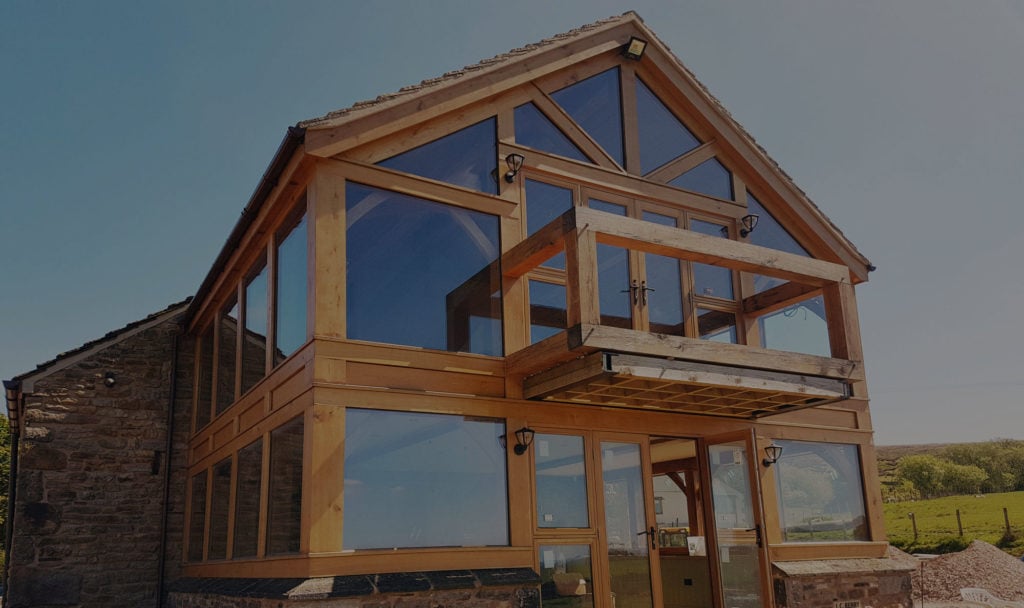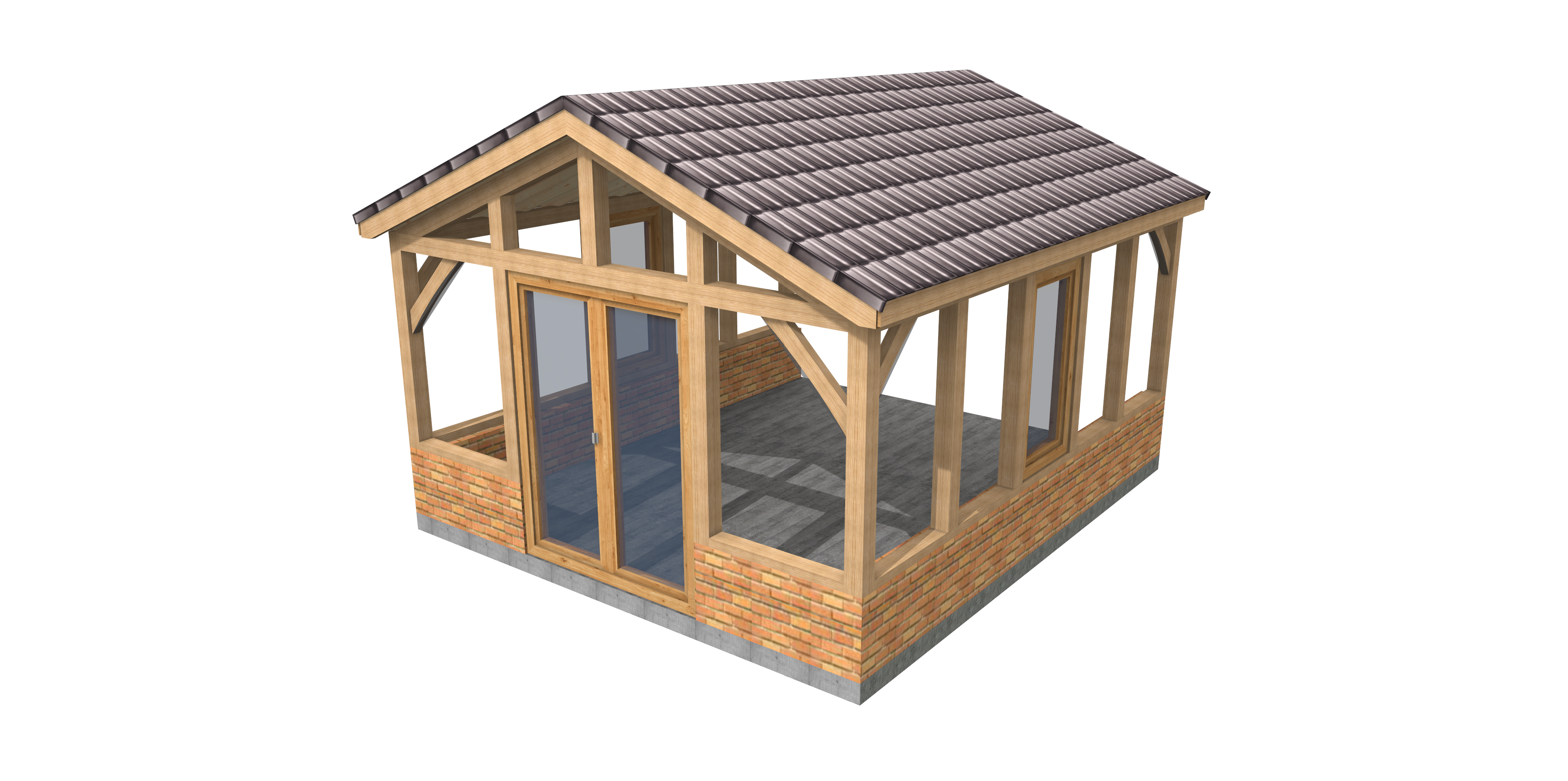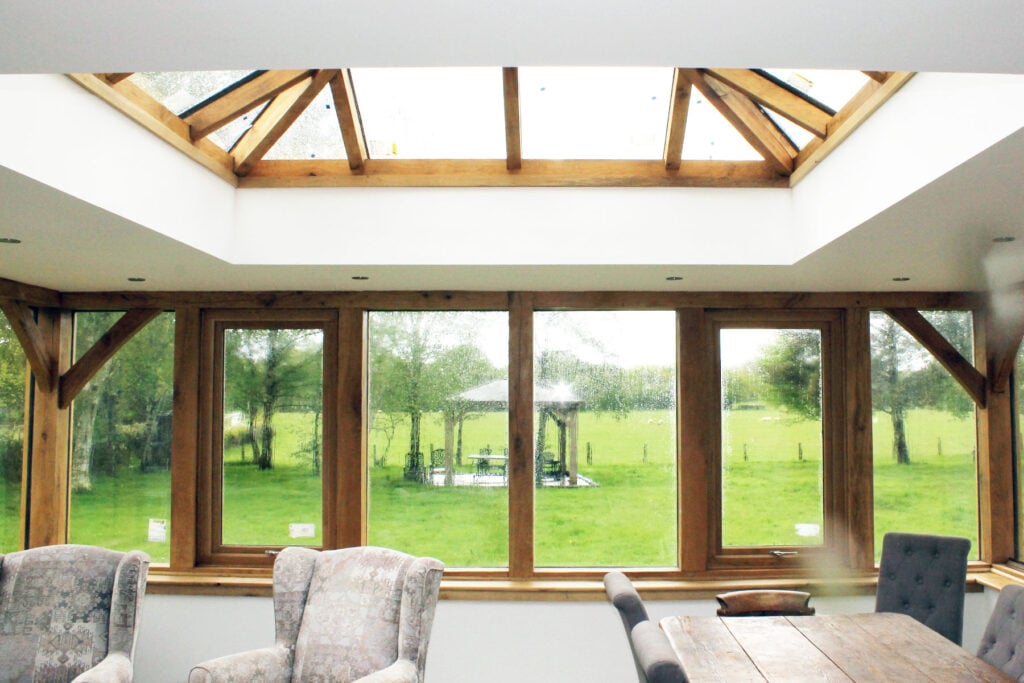Oak frame orangeries can provide a beautiful and timeless addition to a home, but like any construction project, they also come with their own set of potential problems. Here are five common issues associated with oak frame orangeries:
- Cost: Oak frame orangeries can be quite expensive to build compared to other types of extensions or conservatories. The cost of the oak frame itself, along with the skilled craftsmanship required for construction, can significantly drive up the and overall project cost. Buying your orangery as a pre-machined kit form can save you many thousands of pounds by reducing specialist carpentry skills needed on site, perfectly machined off-site on a CNC machine to reduce construction time. By using sawmill and machinist near to the source (Oak forests) - You can reduce eliminate waste and scrappage on your transport costs.
- Maintenance: While oak is a durable and long-lasting material, it requires regular maintenance to ensure its longevity. Without proper maintenance, the oak frame can deteriorate over time due to exposure to weather, pests, and fungal decay. This can involve treatments, staining, and general upkeep. This is particularly true with a beautiful oak frame orangery as it will need a coat of UV protection every 2 years or so.
- Complexity of Construction: Building an oak frame orangery requires a high level of skill and expertise. The intricacies of crafting and assembling the oak frame components can lead to construction delays or mistakes if not handled properly, potentially impacting the overall project timeline. Assembling an oak frame orangery from scratch could be very time consuming for a team of carpenters. A Premier Heritage Oak Orangery is machined off site by a CNC machine for fast and accurate assembly on site.
- Planning Permission and Regulations: Depending on your location and the size of the orangery, you may need to obtain planning permission or adhere to specific building regulations. Navigating these requirements can be time-consuming and challenging, adding a layer of complexity to the project.
- Insulation and Heating: Oak frame orangeries can be less energy-efficient compared to other types of extensions. The large amount of glass used in orangeries can result in heat loss during colder months and heat buildup during warmer months. Proper insulation and heating solutions need to be carefully planned to ensure comfortable year-round use. Ask your builder or joiner to see if your orangery needs to comply with Part L building regulations (Energy Efficiency). generally, if the orangery is below 30 SQM and is on the ground floor - It does not need to comply.
It's important to note that many of these problems can be mitigated or addressed through proper planning, choosing experienced professionals, and regular maintenance. If you're considering building an oak frame orangery, it's advisable to work with reputable architects, builders, and contractors who have experience with this type of construction and can guide you through the process while helping you avoid potential pitfalls.




